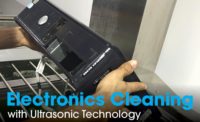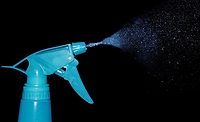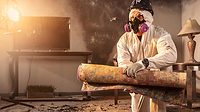Taking Cleaning & Disinfecting Even Further with 21st Century Organosilane Technology












The Obama administration is using $1.2 billion to combat the spread of ‘Superbugs’; an NFL sports team is being sued for $20 million over a MRSA infection; 23,000 people die and millions are infected as ‘Superbugs’ become resistant to antibiotics, disinfectants and other anti-microbial products. And now, mold is more lethal than asbestos and more common.
Infection is the number one cause of death worldwide and the number three cause of death in the United States. Absenteeism due to sickness costs $50 billion a year. Twenty-five years ago, 80% of all infections were controlled by antibiotics. The continued use of the chemical products only strengthens the bacteria and makes it more resistant. Today, less than 50% of infections are controllable by chemical means.
”Superbug” mutations caused by disinfectants, sterilants and chemicals are becoming more prevalent. Eighty percent of infections are spread by human touch or touch points. Touch-points are surfaces touched by many people every day, such as door handles, desks, steering wheels, telephones, etc. Human clothing and textiles also carry and distribute bacteria and viruses. Microbial growth is activated by high temperature and moisture. These microbes rapidly adapt, mutate, and multiply when standard cleaning chemicals and protocols are used. The more you clean with conventional chemicals, the greater the risk of microbe mutation. The standard cleaning agents involve either a leaching poison, heavy metals such as silver or copper, or Triclosans, which are banned in other countries. Another problem is these agents stop working once they dry on a surface.
To combat this epidemic, there is a technology that is a mechanical kill rather than a chemical kill. This makes it far less susceptible for the bacteria to become resistant. The technology is known as organosilane, a biostatic surface protection and antimicrobial.
Organosilane technologies are a new class of antimicrobial protection that, when polymerized to a surface, provide prolonged protection against damaging microbes such as bacteria, mold, mildew and certain soft shell viruses for up to 90 days.
According to Dow Corning, they “pioneered the development of organosilane technology more than 50 years ago to provide new classes of materials with specific physical and chemical properties: silicones and silanes.”
But until now, it’s been a little-known technology, but one that would change the biohazard remediation world over time.
Think of these organosilanes as a layer of electrically charged “spears.” When a microorganism comes in contact with the treated surface, the spear punctures the cell membrane and electrocutes the remnants. Nothing is transferred to the now-dead cell, the antimicrobial does not lose strength, and the spear is now ready for the next cell to kill.
Normal cleaning of the treated surface is required to remove dead microbes, dust, and dirt so that the “spears” are not buried. This process will continue until the organosilane is physically abraded from the surface. The organosilane makes a durable and long-lasting bond to most surfaces, both porous and non-porous, and textiles. This technology causes a mechanical kill instead of a chemical kill, which at the margins of treated areas can lead to resistant microbes. The benefit is clearly in a product that continues to provide protection long after application.
For the restoration world, organosilane technology takes remediation one step further. Once mold or another harmful environmental issue is cleaned and disinfected in the best possible way, contractors can apply this antimicrobial surface protectant to provide a barrier, discouraging regrowth of bacteria and offering longer term protection.
While the most obvious uses for this technology are perhaps schools, gyms, hotels, and restaurants, the possibly applications are truly far-reaching. Microorganisms are the most prevalent and potent pollutants in the indoor environment and their role as causers and aggravators of disease conditions are well documented.
To benefit from the demands for antimicrobial/antibacterial products as well as the antimicrobial/antibacterial performance needs of many sectors, restoration contractors should utilize a treatment that provides for a microbial control claim and an antimicrobial finish.
Here are six steps to consider with organosilane technology:
1. Adopt a non-leaching antimicrobial that doesn’t pose the risk of crossing the skin barrier or negatively affect the normal microbial flora of the skin. If it creates a “zone of inhibition” or must integrate into the cell to have function, it leaches or moves and has the potential to cause problems to people and the environment. It also contributes to the creation of Superbugs.
2. Adopt an antimicrobial technology with a proven history of use.
3. Adopt an antimicrobial technology that is adaptable across many utilities and stand up to use and abuse conditions.
4. Adopt a non-leaching antimicrobial that doesn’t pose the risk of creating adaptive resistant microorganisms or Superbugs.
5. Adopt an antimicrobial technology that is registered with the EPA, the EU, and other regulatory agencies.
6. Adopt an antimicrobial technology that has technical and marketing support.
There are several companies out there offering organosilane technology antimicrobial products in powder, solvent and gas forms. For some helpful links, visit this article online at www.randrmagonline.com.
Other Links:
http://www.dowcorning.com/content/publishedlit/26-1402-01.pdf
Looking for a reprint of this article?
From high-res PDFs to custom plaques, order your copy today!











